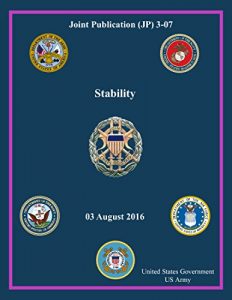Technical Manual TM 3-34.84 Swift Water Diving Operations March 2015
Supervisors and divers must be thoroughly familiar with the risks associated with swift/fast water diving operations. Train-ups, rehearsals, and unit standard operating procedures should be used when planning and conducting diving operations in currents above 1 knot (1.85 kilometers per hour) (scuba) and 2.5 knots (4.63 kilometers per hour) (SSD). For the purposes of this manual, swift water is defined as sustained current from 1 to 4 knots (1.85 to 7.41 kilometers per hour). Fast water is defined as sustained current in excess of 4 knots (7.41 kilometers per hour). The distinction is important as many of the safety steps for swift water DO NOT translate into safe practices for fast water.
Swift/fast water divers must know how to move in the water to lessen the chances of being trapped, or pulled off the project and thrown down stream. Careful consideration needs to be taken in regard to the divers’ overall fitness level, underwater hazards, lost diver procedures, and the increased risk of arterial gas embolism should the diver experience an uncontrolled ascent.
Topside personnel must understand the forces acting on the diver, the tenders, and the support craft, as well as the potential for waterborne hazards to interfere with anchors, lines, and emergency recovery procedures. Supervisors must take into account additional risks associated with this type of operation. Leaders must plan for greater manning requirements, shorter bottom times, and increased fatigue of dive side personnel.
This publication is developed as a supplement to AR 611-75, FM 3-05.212/MCRP 3-11.3A, SS521-AG-PRO-010 0910-LP-106-0957, and TM 3-34.83. TM 3-34.84 provides recommended planning steps and procedures for conducting swift/fast water diving operations, to include the various techniques and equipment that will aid the dive team in mission accomplishment.
This publication is not all inclusive. Leaders must assess each diving operation independently and conduct proper risk management to ensure personnel safety. TM 3-34.84 covers basic risks associated with swift/fast water diving, planning procedures, recommended equipment, and procedures. The diving supervisor on-site will need to adjust based on the mission, enemy, terrain and weather, troops and support available, time available, and civil considerations.
This TM is designed to provide training information, strategies, program development, and training support materials for swift/fast water diving operations. Leaders will receive relevant information to assist the development of individual training programs. Everything from supervisor/diver selection to diver tactics, techniques, and procedures are covered in the pages that follow. Applying strategies and planning considerations from this TM, United States Navy Diving Manual, and TM 3-34.83 will improve the dive team’s performance when conducting operations in high current areas.
Supervisors and divers must be thoroughly familiar with the risks associated with swift/fast water diving operations. Train-ups, rehearsals, and unit standard operating procedures should be used when planning and conducting diving operations in currents above 1 knot (1.85 kilometers per hour) (scuba) and 2.5 knots (4.63 kilometers per hour) (SSD). For the purposes of this manual, swift water is defined as sustained current from 1 to 4 knots (1.85 to 7.41 kilometers per hour). Fast water is defined as sustained current in excess of 4 knots (7.41 kilometers per hour). The distinction is important as many of the safety steps for swift water DO NOT translate into safe practices for fast water.
Swift/fast water divers must know how to move in the water to lessen the chances of being trapped, or pulled off the project and thrown down stream. Careful consideration needs to be taken in regard to the divers’ overall fitness level, underwater hazards, lost diver procedures, and the increased risk of arterial gas embolism should the diver experience an uncontrolled ascent.
Topside personnel must understand the forces acting on the diver, the tenders, and the support craft, as well as the potential for waterborne hazards to interfere with anchors, lines, and emergency recovery procedures. Supervisors must take into account additional risks associated with this type of operation. Leaders must plan for greater manning requirements, shorter bottom times, and increased fatigue of dive side personnel.
This publication is developed as a supplement to AR 611-75, FM 3-05.212/MCRP 3-11.3A, SS521-AG-PRO-010 0910-LP-106-0957, and TM 3-34.83. TM 3-34.84 provides recommended planning steps and procedures for conducting swift/fast water diving operations, to include the various techniques and equipment that will aid the dive team in mission accomplishment.
This publication is not all inclusive. Leaders must assess each diving operation independently and conduct proper risk management to ensure personnel safety. TM 3-34.84 covers basic risks associated with swift/fast water diving, planning procedures, recommended equipment, and procedures. The diving supervisor on-site will need to adjust based on the mission, enemy, terrain and weather, troops and support available, time available, and civil considerations.
This TM is designed to provide training information, strategies, program development, and training support materials for swift/fast water diving operations. Leaders will receive relevant information to assist the development of individual training programs. Everything from supervisor/diver selection to diver tactics, techniques, and procedures are covered in the pages that follow. Applying strategies and planning considerations from this TM, United States Navy Diving Manual, and TM 3-34.83 will improve the dive team’s performance when conducting operations in high current areas.












